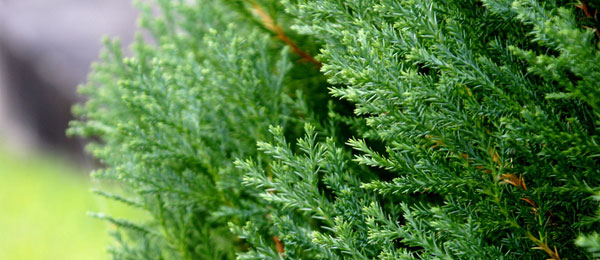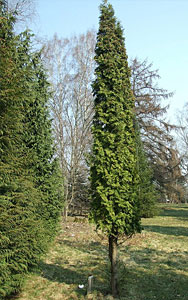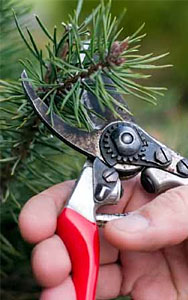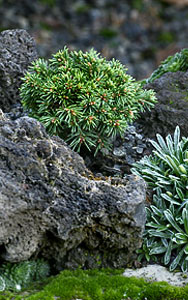Garden Tips
Pruning Conifers

Part of the allure of conifers is that they are usually low-maintenance plants. Many conifers have evolved in regions with low rainfall, poor soil conditions, and extreme temperatures, so they are generally considered to be rugged plants.
When thinking about pruning conifers—or any plant for that matter—it's good to remember the old carpenter's adage, "Measure twice and cut once." In the case of conifers, it's "Think twice and prune once." With this in mind, there are two things would-be pruners should ask themselves before making a single cut: "Why do I want to prune this conifer?" and "Which conifer is this, anyway?". Knowing the answers to these two questions is critical so that you can determine how and when conifers should be pruned.
01. Prune for Size Control
In some ways, this is the weakest reason for pruning. If we plant the right tree in the right place, tree size should not be an issue. Almost all gardeners, however, have found themselves in the position where a tree grows faster than anticipated into other plants or buildings, and the need to keep that conifer in check arises.



02. Prune to Form
The pyramidal form many of us want from our conifers results from their strong apical dominance. This means a single leader branch dominates and suppresses the growth of other shoots. Occasionally, two or more terminal leaders may become dominant, creating a Mohawk look, or the main leader grows quickly, making the tree look like it has a rocket shooting out the top. These conditions can make your lovely tree resemble a nondescript shrub. Extra leaders can also develop into branches that have poor attachment angles and are often the first to break in storms.
03. Health
Removing dead, diseased, or damaged branches should be done anytime a problem pops up and can be safely corrected. Removing branches that cross and could potentially rub against each other is important because these injuries can be an entry point for disease. Limbs that appear weak because of poor attachment angles (called a narrow crotch) should also be pruned away. As the tree grows, excess bark accumulates in the crotch. This results in weakness because, over time, more bark and less wood holds the branch to the trunk.
